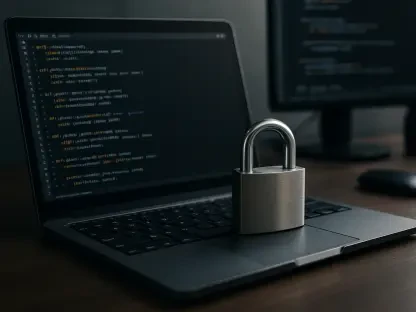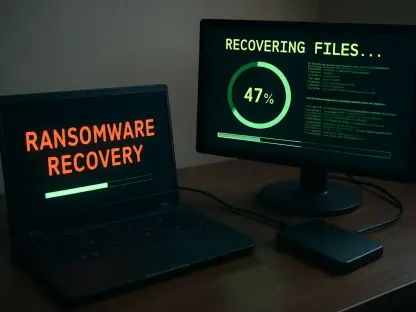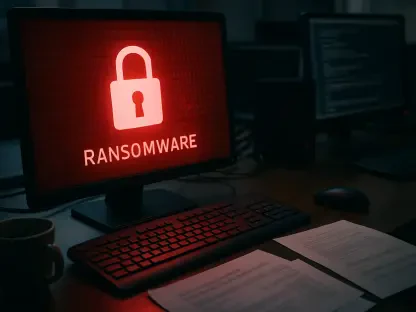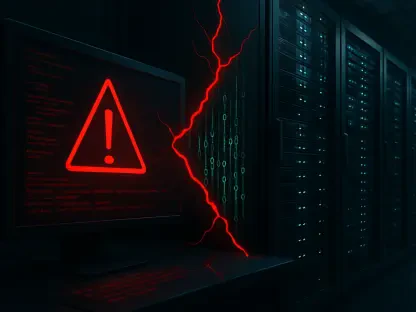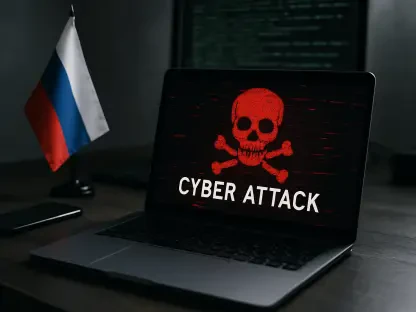Imagine a tool trusted by over 100 million users worldwide, integral to daily operations on Windows systems, suddenly becoming a gateway for malicious attacks due to a severe cybersecurity threat. This is the alarming reality with 7-Zip, a popular file archiver, now at the center of attention because of a remote code execution (RCE) vulnerability identified as CVE-2025-11001, alongside a related flaw, CVE-2025-11002, which have been actively exploited by threat actors. These vulnerabilities, stemming from improper handling of symbolic links in ZIP archives, allow attackers to execute arbitrary code by manipulating directory traversal. With a high severity CVSS v3 score of 7.0, the potential for widespread damage is significant, especially since no elevated privileges are required for exploitation. This situation underscores the urgent need for awareness and action among users and organizations relying on this software for file compression and extraction tasks, as the risks of data breaches and malware infections loom large.
Understanding the Vulnerability
The root of this critical issue lies in how 7-Zip processes crafted ZIP files containing malicious symbolic links, a flaw that enables attackers to write files beyond the intended extraction directory. This vulnerability, present in versions prior to the latest release, can result in overwriting essential system files or injecting dangerous payloads. Such actions could lead to full code execution under the context of the user or service account running the software. Security researchers have emphasized the danger of escaping sandboxed environments, a particularly concerning prospect for enterprises with automated file processing systems. The public release of a proof-of-concept (PoC) exploit has further exacerbated the threat, lowering the barrier for cybercriminals to launch attacks. Often, exploitation requires minimal user interaction, such as simply opening or extracting a malicious archive, making it a favored tactic in phishing schemes and drive-by download campaigns targeting unsuspecting individuals and businesses.
Beyond the technical specifics, the implications of this flaw are far-reaching, especially considering 7-Zip’s widespread adoption across various industries. The ability of attackers to manipulate file paths through directory traversal means that critical sectors like healthcare and finance, where routine file handling is common, face heightened exposure. Early indicators have confirmed active exploitation, with threat actors focusing on unpatched systems to deploy ransomware, steal sensitive data, or establish persistent backdoors. This scenario is particularly alarming in supply chain attacks, where compromised archives can spread rapidly through email attachments or shared drives. The urgency of addressing this vulnerability cannot be overstated, as the potential for silent malware propagation across networks poses a significant challenge to organizational security, especially in environments that rely heavily on bulk file operations for daily workflows.
Real-World Impact and Urgency
The real-world consequences of this vulnerability are already unfolding, with confirmed reports of attackers targeting unpatched systems in sensitive sectors. Advisory alerts from authoritative bodies have underscored the immediate need for action, highlighting the risk to industries that depend on seamless file handling. In environments where automated extractions are routine, the silent spread of malware becomes a pressing concern, amplifying the potential for widespread disruption. The nature of the attack, often requiring only basic interaction like extracting a file, aligns with common cybercriminal strategies seen in phishing and other deceptive campaigns. This ease of exploitation, coupled with the availability of exploit code, has accelerated the transition from disclosure to active attacks, leaving little time for organizations to respond. The stakes are high, as successful breaches could lead to severe outcomes, including financial loss, compromised data integrity, and long-term operational damage across critical infrastructures.
Adding to the urgency is the broader trend of cybercriminals leveraging flaws in widely used software to maximize their reach. Tools like 7-Zip, embedded in countless workflows, present an attractive target for threat actors seeking to exploit trust in everyday utilities. The sophistication of these attacks continues to evolve, with adversaries adapting quickly to disclosed vulnerabilities. This dynamic threat landscape illustrates the dual challenge of addressing technical weaknesses while managing operational risks in automated environments. For organizations, the impact extends beyond immediate system compromises to potential reputational harm and regulatory scrutiny, especially in sectors handling sensitive information. Addressing this issue promptly is not just a technical necessity but a strategic imperative to safeguard against cascading effects that could undermine trust and stability in digital ecosystems over the coming years.
Mitigation and Protective Measures
To counter this pressing threat, users and organizations must prioritize updating to 7-Zip version 25.00 or later, which includes critical patches to prevent directory traversal by enforcing stricter path canonicalization. This update effectively blocks symbolic links from escaping extraction boundaries, neutralizing the core risk posed by the vulnerabilities. Notably, the issue predominantly affects Windows platforms, with no significant impact reported on Linux or macOS systems at this time. Ensuring that all instances of the software are updated across personal and enterprise environments is a vital step in closing the window of opportunity for attackers. Beyond the patch, adopting a cautious approach to handling ZIP files from untrusted sources can further reduce exposure, as many attacks hinge on deceptive delivery methods designed to trick users into initiating the extraction process.
In addition to technical fixes, fostering a culture of rapid response to disclosed vulnerabilities is essential in today’s fast-paced threat environment. Organizations should integrate timely patching into their security protocols, alongside regular audits of software dependencies to identify potential weaknesses before they are exploited. The broader lesson from this incident is the importance of vigilance with tools that, while seemingly innocuous, can become vectors for significant breaches when flaws emerge. Cybersecurity teams are encouraged to monitor for indicators of compromise related to malicious archives and to educate users on recognizing suspicious files. By combining immediate action with long-term preventive strategies, the risks associated with this flaw can be substantially mitigated, protecting systems from the severe consequences of exploitation that have already begun to surface in various sectors.
Lessons Learned and Future Safeguards
Reflecting on the rapid exploitation of these 7-Zip vulnerabilities, it becomes evident that the cybersecurity community must grapple with the shrinking timeline between disclosure and active attacks. The availability of a PoC exploit has played a pivotal role in accelerating real-world threats, underscoring the need for faster patch deployment cycles. This incident has revealed how even trusted utilities can become liabilities when technical flaws intersect with operational dependencies, particularly in automated workflows. The response from affected sectors has highlighted a critical gap in preparedness, prompting a reevaluation of how software updates are prioritized in high-stakes environments. Looking ahead, the focus should shift toward building resilience through proactive measures, such as integrating automated update mechanisms and enhancing threat intelligence sharing to stay ahead of emerging risks.
As the dust settles on this particular threat, the path forward involves strengthening defenses with actionable strategies that extend beyond immediate fixes. Investing in robust security training for employees to recognize and report suspicious file interactions emerges as a key takeaway. Additionally, adopting layered security approaches, including endpoint protection and network monitoring, can help detect and block malicious activities stemming from similar vulnerabilities. Collaboration across industries to establish rapid response frameworks will also be crucial in addressing future threats with the same urgency that has been necessary here. Ultimately, this episode serves as a stark reminder of the evolving nature of cyber risks, urging all stakeholders to remain vigilant and adaptive in safeguarding digital assets against the next wave of sophisticated attacks.


